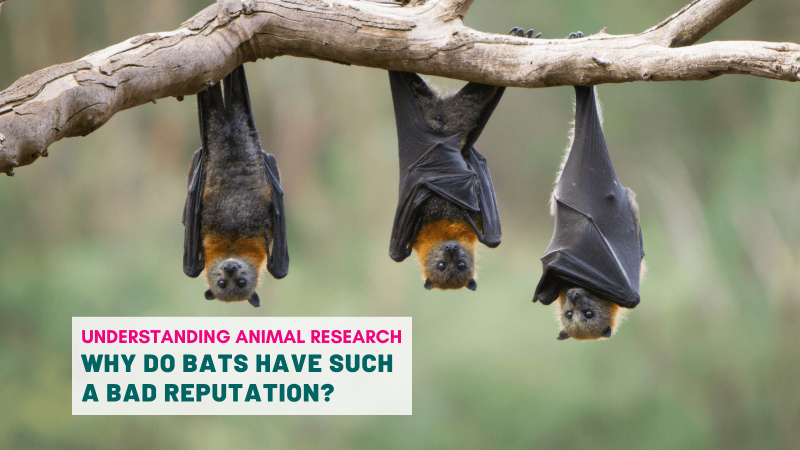Warning signs of the coronavirus: why we knew about it and couldn’t stop it
COVID-19 is a disease caused by the severe acute respiratory syndrome coronavirus 2 (SARS-CoV-2). SARS-CoV-2 was first detected in the city of Wuhan, China, in December 2019, after a cluster of patients with pneumonia of unknown cause were reported to the World Health Organization (WHO).
On 11th March 2020, the World Health Organisation (WHO) announced to all that the Coronavirus SARS-CoV-2 outbreak had developed into a world-wide pandemic. The virus, that originated from the Wuhan province in China, had spread in mere months to most of the planet. From bats to a secondary animal – thought, at first, to be a snake, then a pangolin, but still unknown - to humans, the virus can now transmit from one human to another, and travel across borders with the humans it has infected.
But where does this disease come from, and could we have prevented it? The Sequencing and study of the 2019-nCovviral genome (Covid-19) has led scientists to fit it in the family tree of related coronaviruses (CoVs) found in bats and other species including SARS that came from bats and civets in 2003 and MERS from camels in 2012, but also more common viruses that are responsible for up to 30% of common colds.
COVID-19 sequence showed a 96.2% similarity to a bat virus, indicating that it probably originated in bats before jumping into humans. In many respects, bats represent the perfect reservoir for emerging zoonotic pathogens. The bat’s innate immune response has unique properties that allow it to handle viruses and coexist with them to some extent. These flying mammals have therefore the capacity to host many different pathogens without showing any symptoms. And the Wuhan COVID-19 was one of them.
As a matter of fact, a year before the virus jumped bat-ship and flooded the world, researchers had already predicted the 2019 outbreak in China. A review Paper published early 2019 in an open access journal, by researchers from the Wuhan Institute of virology, clearly predicted that bat-borne CoVs would re-emerge to cause the next disease outbreak and that China would likely be a prime hotspot. According to the scientists:
“It is highly likely that future SARS or MERS like coronavirus outbreaks will originate from bats. Therefore, the investigation of bat coronaviruses becomes an urgent issue for the detection of early warning signs, which in turn (can) minimize the impact of such future outbreaks in China. “
So where did this information go? Why was it that the scientists tried to alert us but their warnings didn’t get any attention? The thing is, this wasn’t the only paper to sound the alarm on a possible pandemic situation originating in animals, nor will it be the only one in the future. It is considered today that over three quarters of emerging infectious diseases originate in animals.
A study carried out on 335 diseases that emerged between 1940 and 2008 showed that 60% came from animals, the majority of which (72%) came from wildlife. And members of the Coronavirus family (Coronaviridae) are quintessential One Health viruses, viruses that infect animals and man. These viruses require a local, regional, national and global collaborative and transdisciplinary approach to optimize health outcomes by monitoring human, animal and plant diseases and environments.
The challenge is to predict when and where these viruses are going to cross over and create a new zoonotic disease in order to prevent such outbreaks. And the best way to do that is to study the diseases in the animals, find cures in the animals and stop them, in the animals, before they cross over. So to prepare for and react to a new epidemic, it is necessary to develop new, integrated and collaborative health approaches on a global scale.
But these integrated “One health"* approaches are rarely sufficiently implemented during health crises. The prevention, surveillance and control of these emerging diseases require close collaborations between specialists from different disciplines.
Ecologists, veterinarians, virologists, epidemiologists and data scientists need to work together to identify animal populations that are potentially reservoirs of pathogens, and conceive models to identify more precisely the geographic areas where the emergence of a disease is most likely.
An interdisciplinary, intersectoral and worldwide mobilization can help identify the origin of the emergences and the underlying factors as soon as possible, to provide elements for early control, and so limit transmission between animal and human populations.
There will always be emerging diseases. So rather than point fingers at who is to blame, let’s learn from our mistakes. Bats are clearly a pool for zoonotic diseases so let’s start by avoiding close cohabitation by, for example, stopping bat meat consumption and bat habitat destruction.
And if the medical, economic and media repercussions of the Covid-19 pandemic have taught us one thing, it is that we need to keep a closer eye on animal diseases and maintain a suitable ecosystem for the wild animals that live alongside human kind. Protecting animals and respecting their habitats also protects humans from potential life-threatening pandemics, the like of which threatens our society today.
Keep updated on Coronavirus news on Animal Research Information
*One Health
'One Health' is an approach to designing and implementing programmes, policies, legislation and research in which multiple sectors communicate and work together to achieve better public health outcomes.
The areas of work in which a One Health approach is particularly relevant include food safety, the control of zoonoses (diseases that can spread between animals and humans, such as flu, rabies and Rift Valley Fever), and combatting antibiotic resistance .
https://www.who.int/features/qa/one-health/en/
REFERENCES:
https://www.sciencemag.org/news/2020/01/mining-coronavirus-genomes-clues-outbreak-s-origins
https://www.understandinganimalresearch.org.uk/news/communications-media/bats-bad-rap/
https://www.statnews.com/2020/03/11/who-declares-the-coronavirus-outbreak-a-pandemic
https://www.ncbi.nlm.nih.gov/pmc/articles/PMC6466186/
https://www.nature.com/articles/nature06536
http://www.fondation-droit-animal.org/105-covid-19-origine-animale-et-modes-de-contamination/
https://www.journals.elsevier.com/one-health/news/aileen-marty-editor-in-chief-about-chinese-coronavirus
Last edited: 29 July 2022 09:46




